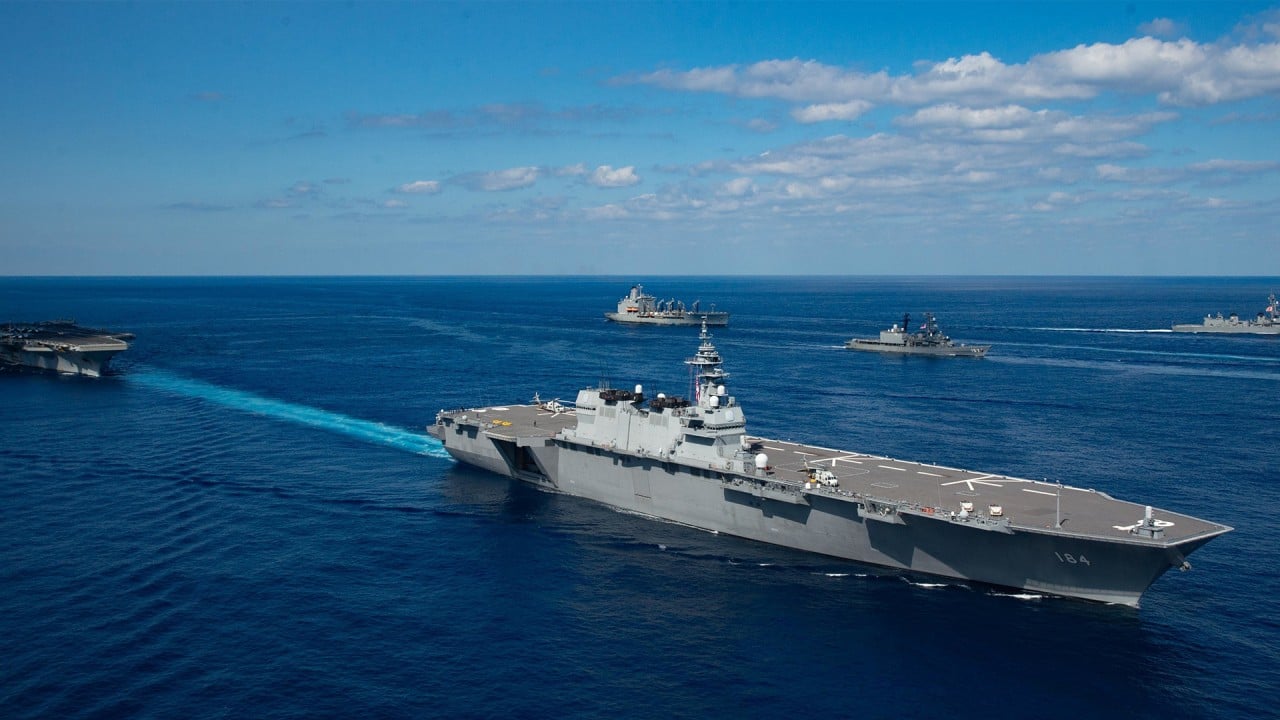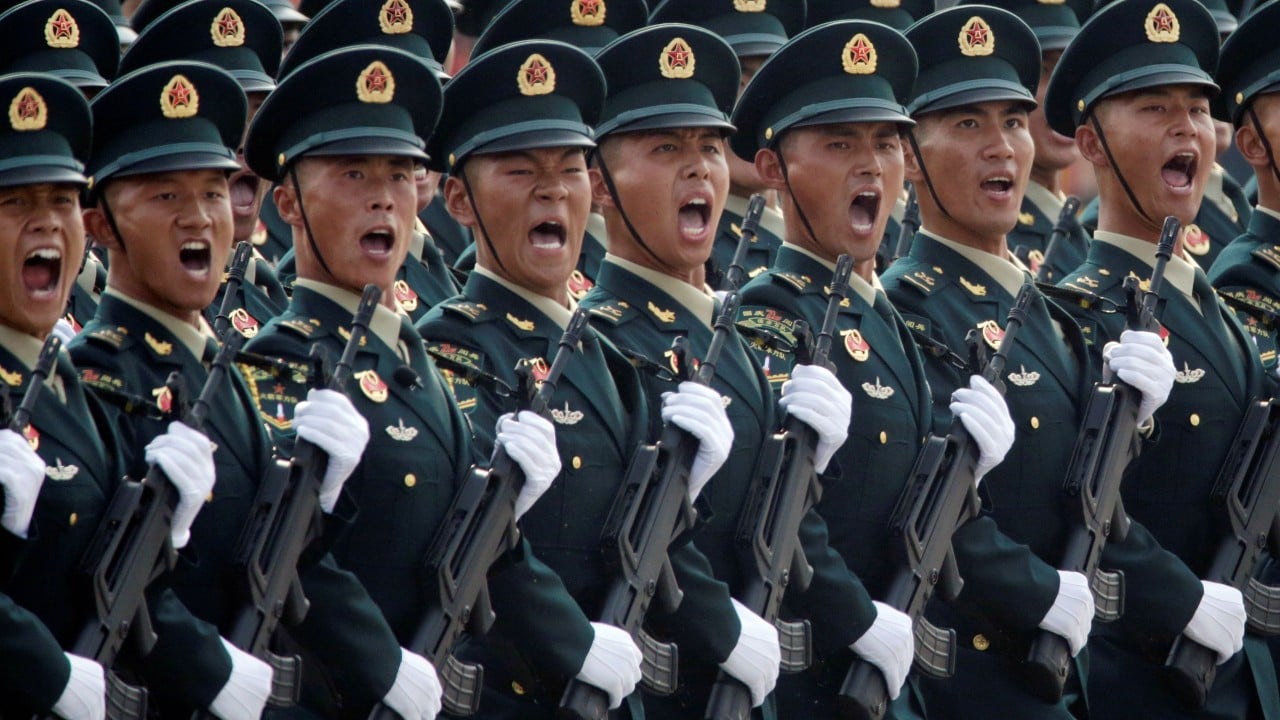
Chinese, US militaries blame each other for PLA ‘no-show’ at virtual meeting
- US says People’s Liberation Army did not turn up for the two sides’ virtual conference, part of a mechanism to ensure sea and air safety
- But China says it proposed an agenda in November only for the Americans to try to proceed without agreeing one
The three-day Military Maritime Consultative Agreement (MMCA) work group and flag officer session, scheduled from Monday, was part of a mechanism to strengthen maritime safety, improve operational air and sea safety, and reduce risk between the two militaries.
But the PLA did not attend the virtual meeting that was agreed upon by the two militaries, according to the Indo-Pacific Command, which is acting as the US defence secretary’s lead agent for the dialogue.

02:14
Japan-US hold joint military drills including cyberwarfare training as concerns about China grow
“[China’s] refusal to show up to MMCA is another example [showing] that China does not honour its agreements, and this should serve as a reminder to all nations as they pursue agreements with China going forward,” Admiral Phil Davidson said in a statement on Thursday.
The Indo-Pacific Command said that it was logged in for the virtual teleconference and was ready to participate for all three days of the event, but the PLA did not appear.
The US statement said its military would continue to seek “a constructive, stable and results-oriented” relationship with the PLA and would address any concerns of the Chinese military in the “appropriate forum”.
Later on Thursday, the PLA Navy said in a statement that the Chinese side had on November 18 submitted its proposed topics and arrangements for the meeting, but that the two sides had not reached agreement about it.
“However, the US side persisted in pushing its unilateral topic ideas, arbitrarily compressing the length of the annual meeting, changing the nature of the annual meeting, and even attempting to force China’s participation in the meeting when the two sides had not yet agreed on the topics,” spokesman Major Liu Wensheng said.

04:12
Are Xi Jinping’s China and Donald Trump’s US destined for armed conflict?
This was “unprofessional, unfriendly and unconstructive” and was felt to “reflect the consistent bullying style of the United States side and violate international practices”, Liu said, adding that China was willing to maintain communication with the US so that the meeting could be held at a later date.
Concerns over the possibility of a clash between the world’s largest military powers have been growing, largely because of a sharp decline in communication between the two armies since 2018, when the US withdrew its invitation for China to take part in the Rim of the Pacific Exercise, the world’s largest international maritime warfare drill. It did so in retaliation for the PLA’s deployment of missile systems and a bomber aircraft in the disputed Spratly Islands in the South China Sea.
China military: how Beijing is pushing its plan for a modern armed forces
Hostility grew this year, with Beijing complaining of a sharp rise in the number of US military reconnaissance aircraft over the South China Sea, which it sees as provocative. Some of the operations were believed to be less than 100km from the Chinese coast.
But the two countries’ defence ministers held a telephone conversation in August in which they agreed to maintain contact to minimise the risks of military clashes.
Several bilateral talks have followed, including a teleconference in October for the first meeting of the Crisis Communications Working Group between the two armies.
The two militaries established their maritime security consultation mechanism in 1998 to prevent conflict in the air and at sea. Its last meeting was in the eastern Chinese city of Qingdao in June 2019.

